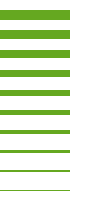https://doi.io-warnemuende.de/10.12754/data-2023-0009
doi:10.12754/data-2023-0009
© Author(s) 2023. This work is distributed
under "CC BY-SA 4.0 License"
Data for the publication Naumov et al. “Dynamics of oxygen sources and sinks in the Baltic Sea under different nutrient inputs”
Purpose: The analysis performed in the paper by Naumov et al. " Dynamics of oxygen sources and sinks in the Baltic Sea under different nutrient inputs " can be reproduced using this data.
Abstract. The Baltic Sea is one of the marine systems suffering from pronounced man-made hypoxia due to the elevated nutrient loads from land. To mitigate hypoxia expansion and to return the Baltic Sea to a good environmental state, the Baltic Sea Action Plan (BSAP), regulating the waterborne and airborne nutrient input, was adopted by all states surrounding the Baltic Sea. However, at the moment, no significant shrinking of the hypoxic area is observed. In this study, two scenario simulations of the future state of the deep parts of the central Baltic Sea (deeper than 70 meters) were carried out, utilizing a 3-dimensional numerical model. Thereby future climate change is not considered. We focused on O2 and H2S sources and sinks under different nutrient input scenarios. We found that under the BSAP scenario, all subbasins in the central Baltic Sea, especially the northern and western Gotland Basin, show significant improvement, namely, oxygenation and oxidation of the deposited reduced material, ceasing its advection to the upper layers and neighboring basins. We found that the nutrient loads are responsible for more than 60% and 80% of the O2 and H2S sources and sinks variability, respectively, at the interannual time scale. We showed that the Baltic Sea could return to the initial state in 1948, but under the more rigorous 0.5 BSAP scenario (nutrient input is halved compared to the BSAP). However, even under the BSAP scenario, the system would probably reach the initial state in the future since we observed no hysteresis effect.
